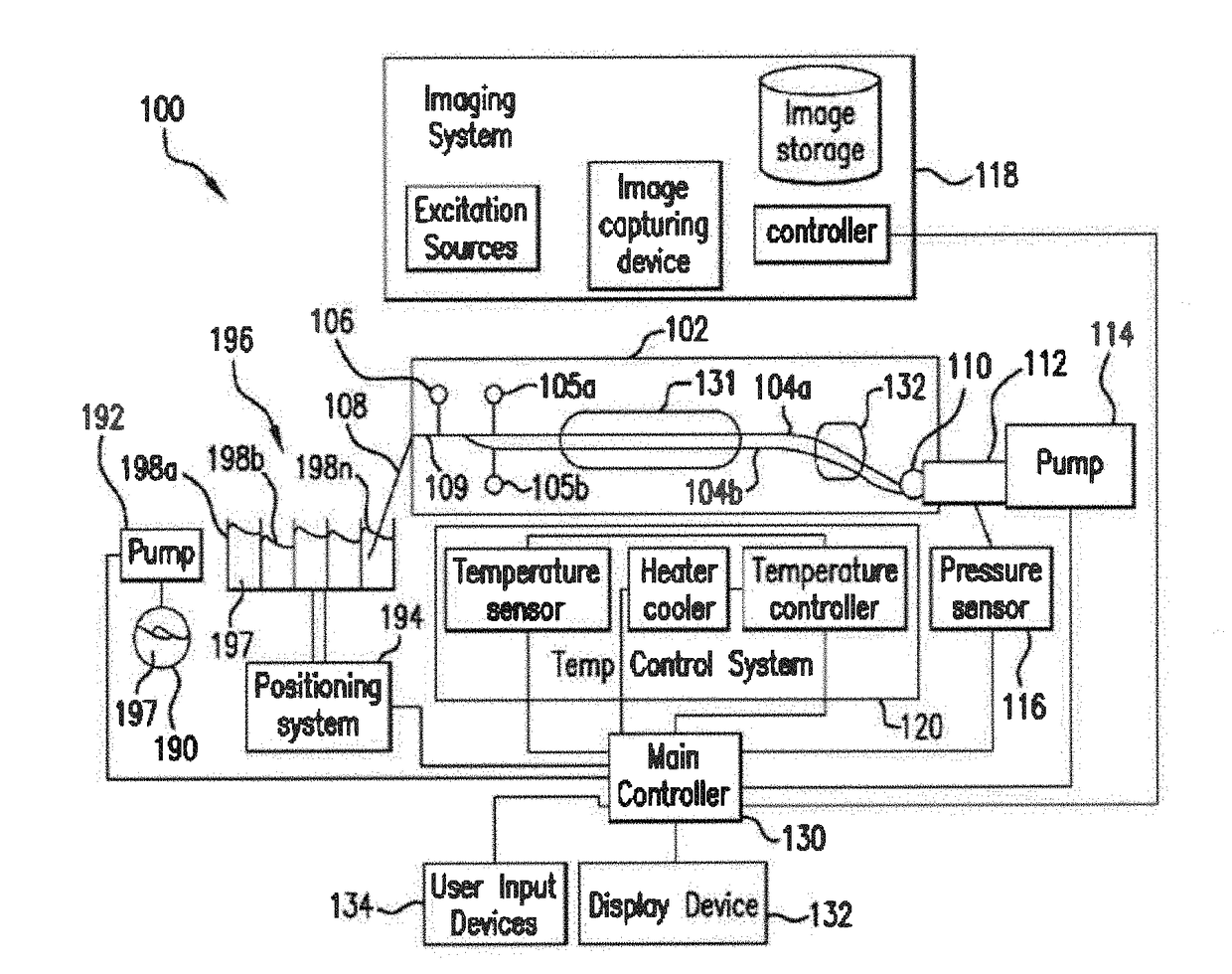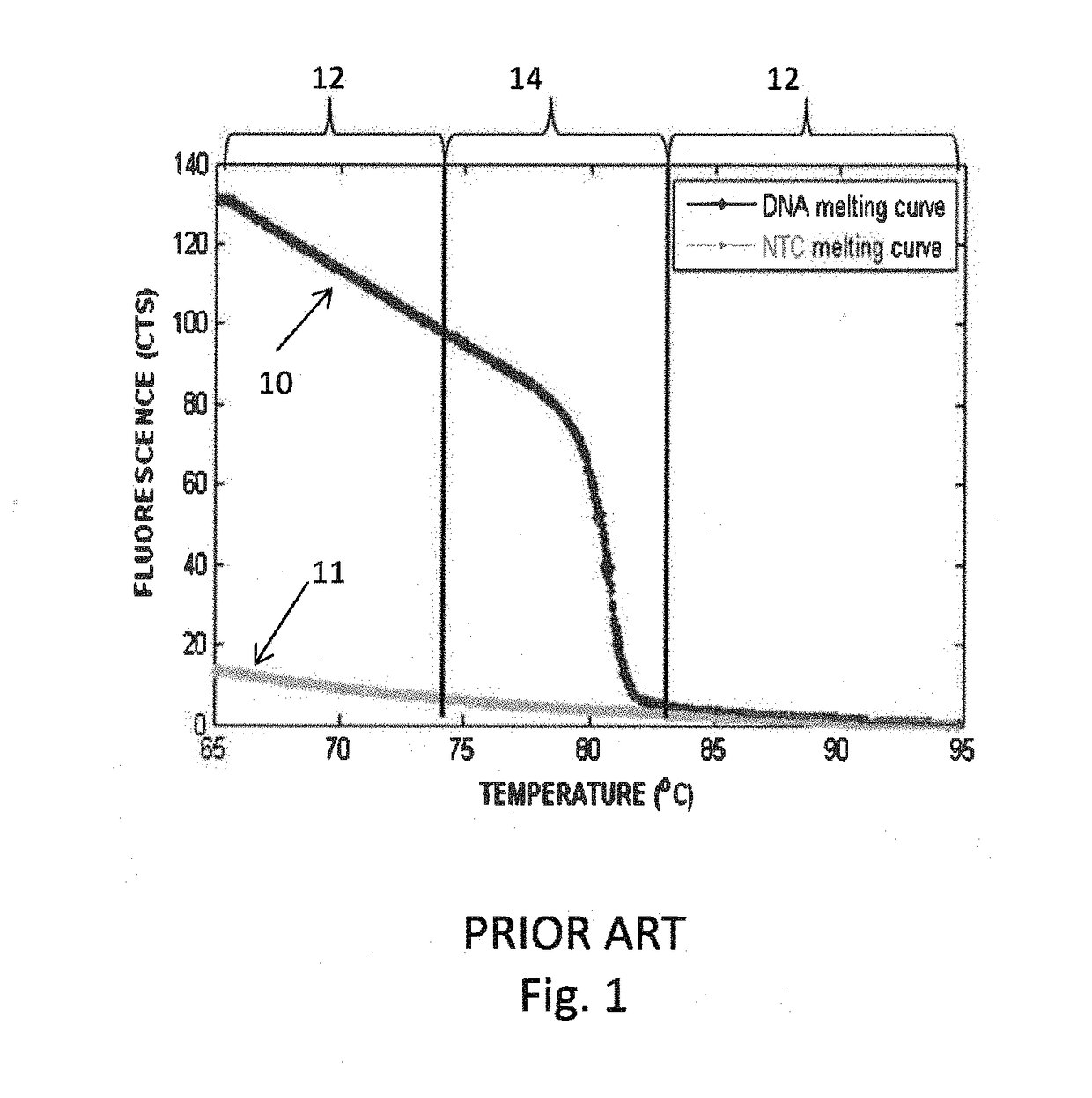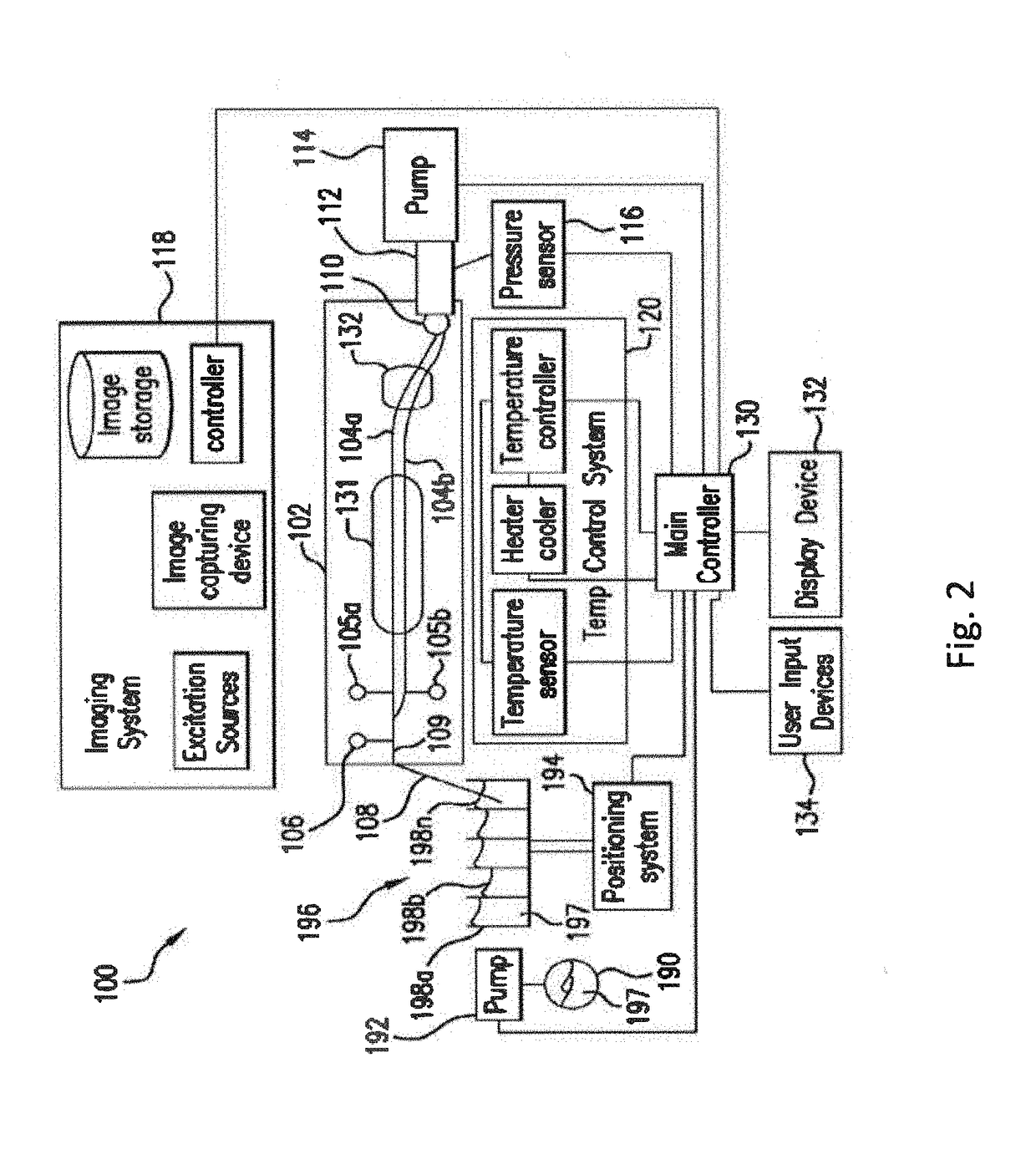System and method for melting curve normalization
a melting curve and normalization technology, applied in the field of nucleic acid analysis, can solve problems such as difficulty in inspection tasks
- Summary
- Abstract
- Description
- Claims
- Application Information
AI Technical Summary
Benefits of technology
Problems solved by technology
Method used
Image
Examples
first embodiment
[0104]In a first embodiment, the background identification algorithm employs an iterative technique using mixture model for modelling melt fluorescence. In this embodiment, the mixture model used is derived from the Van't Hoff equation and hereinafter will be referred to as the Van't Hoff Mixture Model or Mixture Model. The mixture model is described in more details in a provisional application 62 / 353,602, filed on Jun. 23, 2016, which is incorporated herein by reference.
[0105]The mixture model employed to model the raw fluorescence curve assumes that there are M or fewer independent reactions that influence the fluorescence, and the total observed fluorescence is a mixture of these individual effects. Some embodiments of the mixture model can be described mathematically as follows:
Ftotal(T;Θ)=∑i=1MαiFi(T;Θi)suchthat∑i=1Mαi=1andαi≥0foralli,(19)
where Ftotal(T) is the total fluorescence (and should match the observed data if the model is good), where Fi(T; Θi) is the fluorescence of t...
second embodiment
[0142]In a second embodiment shown in FIG. 9, the background identification algorithm may generate background model data that is modeled using the Van't Hoff equation. In a preprocessing step 902, the background algorithm may receive input from a user to select the pre-DNA(T1, T2) or post-DNA (T3, T4) melt regions on a particular melt curve being input and for which background identification is sought. In one embodiment, the input to select the regions may be received via a graphical user interface generated by the background identification algorithm including user selectable image elements enabling input of the values for these regions. In another embodiment, if values for T1, T4 are not defined, the background identification algorithm automatically identifies these values as the start and end points of the melting curve.
[0143]In this embodiment, the melting curve data used as input into the algorithm may be any one of an original melting curve or the negative derivative of the ori...
third embodiment
[0177]In a third embodiment, a background identification algorithm that uses the raw melt curve data is provided. This differs from certain other methods of identifying background reactions which uses filtered melting curves or negative derivative curves as input. While filtering the data is usually advantageous in reducing noise present in the raw data that is due to instrumental and sample variability, it is known that noise reduction is almost always accompanied with local alterations / distortions of the underlying curve shape. This embodiment also does not rely on manual or semi-manual selection of the DNA region of interest (i.e., pre- and post-DNA melt regions) which may be performed using temperature threshold sliders overlapping the displayed melting curves. In a semi-manual selection mode, initial positioning of the sliders may be suggested by an algorithm based on the information derived on the second derivative of the curve which provides information on the local curvature...
PUM
| Property | Measurement | Unit |
|---|---|---|
| Temperature | aaaaa | aaaaa |
| Biological properties | aaaaa | aaaaa |
| Melting point | aaaaa | aaaaa |
Abstract
Description
Claims
Application Information
 Login to View More
Login to View More - R&D
- Intellectual Property
- Life Sciences
- Materials
- Tech Scout
- Unparalleled Data Quality
- Higher Quality Content
- 60% Fewer Hallucinations
Browse by: Latest US Patents, China's latest patents, Technical Efficacy Thesaurus, Application Domain, Technology Topic, Popular Technical Reports.
© 2025 PatSnap. All rights reserved.Legal|Privacy policy|Modern Slavery Act Transparency Statement|Sitemap|About US| Contact US: help@patsnap.com



